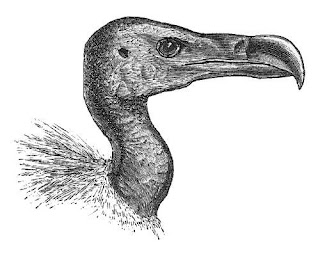The slender-billed vulture (Gyps tenuirostris) belongs to the family Accipitridae. These slender-billed vulture species are distributed in India, Nepal, Myanmar, Laos and Cambodia.
Taxonomy of Slender-billed vulture
- Scientific Name: Gyps tenuirostris
- Common Name: Slender-billed vulture
- French: Vautour à long bec; German: Dünnschnabelgeier; Spanish: Buitre picofino;
- Other names: Gyps indicus tenuirostris; Gyps indicus nudiceps;
- Family: Accipitridae › Accipitriformes › Aves › Chordata › Animalia
- Species author: G. R. Gray, 1844
 |
| Indian birds - Slender-billed vulture - Gyps tenuirostris |
Description
The slender-billed vulture is medium sized vulture, measuring 80 to 100 cm in length. The wingspan is 190 to 260 cm. It has a long neck. The head and neck are black and lack feathers. The neck skin is thickly creased and wrinkled. The bill is dark with pale culmen and black cere. The thin long bill and snake-like long neck are its distinguishing characters.Habitat
The slender-billed vulture inhabits dry open country, partly wooded country and forested areas usually away from human habitation.Feeding habits
These bird species are scavengers, feeding mostly from carcasses of dead animals. They also scavenge at rubbish dumps and slaughterhouses.Breeding
The slender-billed vulture is recorded to nest in tall trees. The nest is built with sticks.Distribution
These vulture species are distributed in India, Nepal, Bangladesh, Cambodia, Laos and Myanmar. They had also occurred in Malaysia and Thailand.Movement Patterns
The slender-billed vulture is sedentary in its range and make movements in search of feed.Status and conservation
The slender-billed vulture global population is now estimated to be 1,000 individual birds. There is a sharp decline in the population of these bird species and they are considered 'critically endangered'. Kidney failure in vultures caused by feeding on carcasses of animals treated with diclofenac (a nonsteroidal anti-inflammatory drug) was the major cause of sudden decline in populations. There is 97% decline in population. These species are nearing extinction.The IUCN (International Union for Conservation of Nature) has categorized and evaluated these vulture species and has listed them as "Critically Endangered".
Image source: https://en.wikipedia.org/wiki/File:Gyps_tenuirostris.png
Image Author: W. T. Blanford | Image License: Public domain
Current topic in Birds of India: Slender-billed vulture - Gyps tenuirostris.
